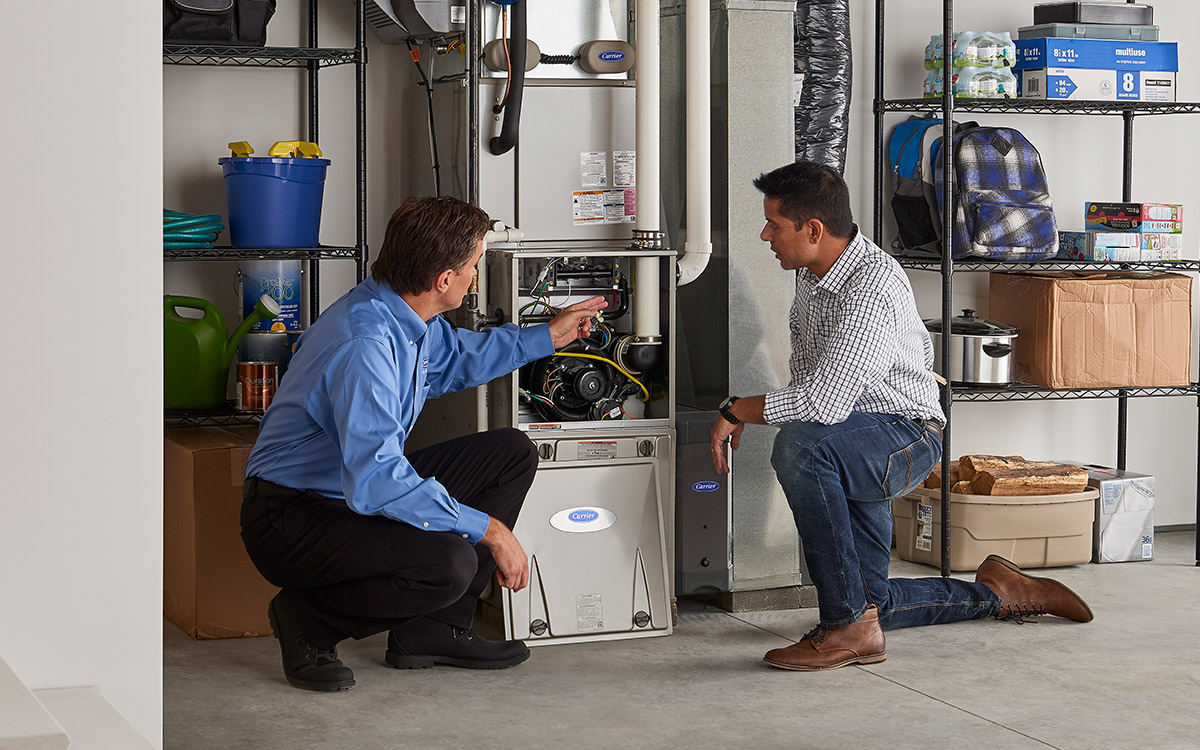
If you’ve ever found yourself shivering in a chilly house because your furnace won’t work, there’s a chance your furnace flame sensor, also called a furnace sensor, might be the culprit.
Knowing when you need furnace sensor replacement can help keep your home warm and your furnace running safely. In this blog post, we’ll explain what a furnace flame sensor is, the signs that indicate it needs to be replaced, and why a professional should handle the job.
What is a furnace flame sensor?
Before diving into when you should carry out furnace sensor replacement, it’s important to understand what it does. The furnace flame sensor is a critical safety device in your furnace. Its job is to detect whether the gas burner is producing a flame. If it senses that no flame is present after the burner ignites, it shuts off the gas valve to prevent unburned gas from flowing into your home. This is a key safety measure that protects your household from the dangers of gas leaks, which could lead to gas poisoning or even explosions.
When the flame sensor is functioning properly, your furnace operates smoothly, providing warmth to your home. However, if it malfunctions, your furnace might shut down or refuse to start altogether. This can leave you not only uncomfortable but also scrambling to figure out what went wrong.
What are the signs that your furnace flame sensor needs replacement?
So how do you know when furnace sensor replacement is necessary? Here are a few telltale signs to watch out for.
1. The furnace frequently shuts off
If your furnace shuts off after just a few seconds of running, this could point to a flame sensor issue. This happens because the flame sensor is not detecting the flame properly, so the system shuts down as a safety precaution. If you find yourself restarting your furnace multiple times in a short period, the flame sensor likely needs cleaning or replacing.
2. The furnace won’t start at all
A completely unresponsive furnace can also be a sign of a bad flame sensor. In this case, the sensor might not be able to detect a flame at all, preventing the furnace from turning on. While other factors like thermostat issues or pilot light problems could also be the cause, once you’ve ruled those out, it’s time to look at the flame sensor.
3. The furnace undergoes short cycling
Short cycling refers to when a furnace rapidly turns on and off without completing a full heating cycle. This not only leaves you with an uncomfortable home but also causes extra wear and tear on your furnace. One of the most common culprits for short cycling is a dirty or failing flame sensor.
4. The furnace has soot or corrosion buildup
Soot or corrosion on the flame sensor can block it from detecting the flame, causing your furnace to malfunction. If you notice a buildup of debris or corrosion when inspecting your furnace, the sensor may need to be cleaned or, in severe cases, replaced. A sensor that’s too dirty might not function properly, even after cleaning.
5. The furnace is resulting in higher energy bills
A faulty flame sensor can cause your furnace to work harder than necessary, leading to increased energy bills. If the sensor fails to detect the flame, it can cause your system to cycle more frequently, resulting in higher energy usage. If you notice a sudden spike in your bills, the flame sensor could be to blame.
What is the difference between cleaning and furnace sensor replacement?
Sometimes, a malfunctioning flame sensor doesn’t need to be replaced right away—it might just need a good cleaning. Cleaning the sensor is a simple process that can sometimes restore its function:
- Turn off the furnace.
- Locate the flame sensor, usually near the burner assembly.
- Use fine-grit sandpaper or steel wool to gently clean the sensor and remove any buildup.
- Reinstall the sensor and test the furnace.
If cleaning doesn’t solve the problem or the sensor is corroded or damaged, it’s time for a replacement. While cleaning can help extend the life of a flame sensor, it won’t fix physical damage or extensive corrosion.
When should you replace the furnace flame sensor?
There are a few key instances when it makes sense to replace your furnace flame sensor instead of just cleaning it. Replacing these sensors can cost between $80-$250, so you should be 100% sure that replacement is necessary—here’s what to look for:
- After multiple cleanings: If you’ve cleaned the sensor several times and it still malfunctions, it’s likely worn out. A professional can assess the problem and determine whether replacement is the best option
- If the sensor is damaged: A bent, cracked, or damaged sensor won’t function properly, even if you clean it. Any physical damage should prompt an immediate replacement to ensure your furnace operates safely
- After 3-5 years of use: Flame sensors typically last between 3-5 years. If your furnace is older and you’ve never replaced the sensor, it’s a good idea to have it inspected. Replacing the sensor before it fails can save you from an unexpected breakdown in the middle of winter
- During a furnace upgrade: If you’re upgrading your furnace or carrying out major repairs, it’s a good time to replace the flame sensor along with other aging components. This ensures your new or upgraded system will run smoothly without interruptions
What can you expect during a professional furnace sensor replacement?
Replacing a furnace flame sensor isn’t a DIY job—it requires technical expertise to ensure the furnace operates safely. When you call a professional technician to replace the sensor, here’s what you can expect:
- Inspection: The technician will begin by inspecting your furnace to confirm that the flame sensor is the root cause of the problem
- Removal: If the sensor is indeed faulty, the technician will remove the old sensor
- Installation: A new flame sensor will be installed, and the technician will test the furnace to make sure everything is working properly
- Safety check: Finally, the technician will perform a safety check of other furnace components to ensure your system is in top condition
Frequently Asked Questions
Below are some commonly asked questions consider:
1. How often should I have my furnace professionally inspected?
It’s recommended to have your furnace inspected by a professional at least once a year, ideally before the winter season begins. This can help catch issues like a failing flame sensor before they cause more significant problems.
2. What happens if I ignore a faulty furnace flame sensor?
Ignoring a faulty flame sensor can lead to a complete furnace failure, leaving your home without heat. Additionally, you risk gas leaks, which can lead to dangerous conditions such as carbon monoxide poisoning or explosions.
3. Can a power outage damage the furnace flame sensor?
A power outage itself shouldn’t damage the flame sensor. However, frequent power surges or fluctuations might affect electrical components in your furnace, including the flame sensor.
Call a professional for furnace sensor replacement
Furnace flame sensor replacement is an essential part of keeping your home safe and warm. While regular cleaning can help maintain the sensor’s functionality, all sensors eventually wear out and need to be replaced. Knowing when to replace your furnace flame sensor can save you from unexpected breakdowns, higher energy bills, and potential safety hazards. If you’re experiencing any of the signs mentioned above, it’s best to call a professional and ensure your furnace is working efficiently.
Get in touch with a professional furnace repair company today.

